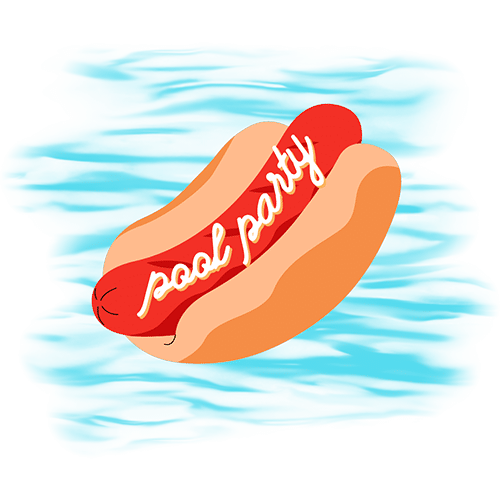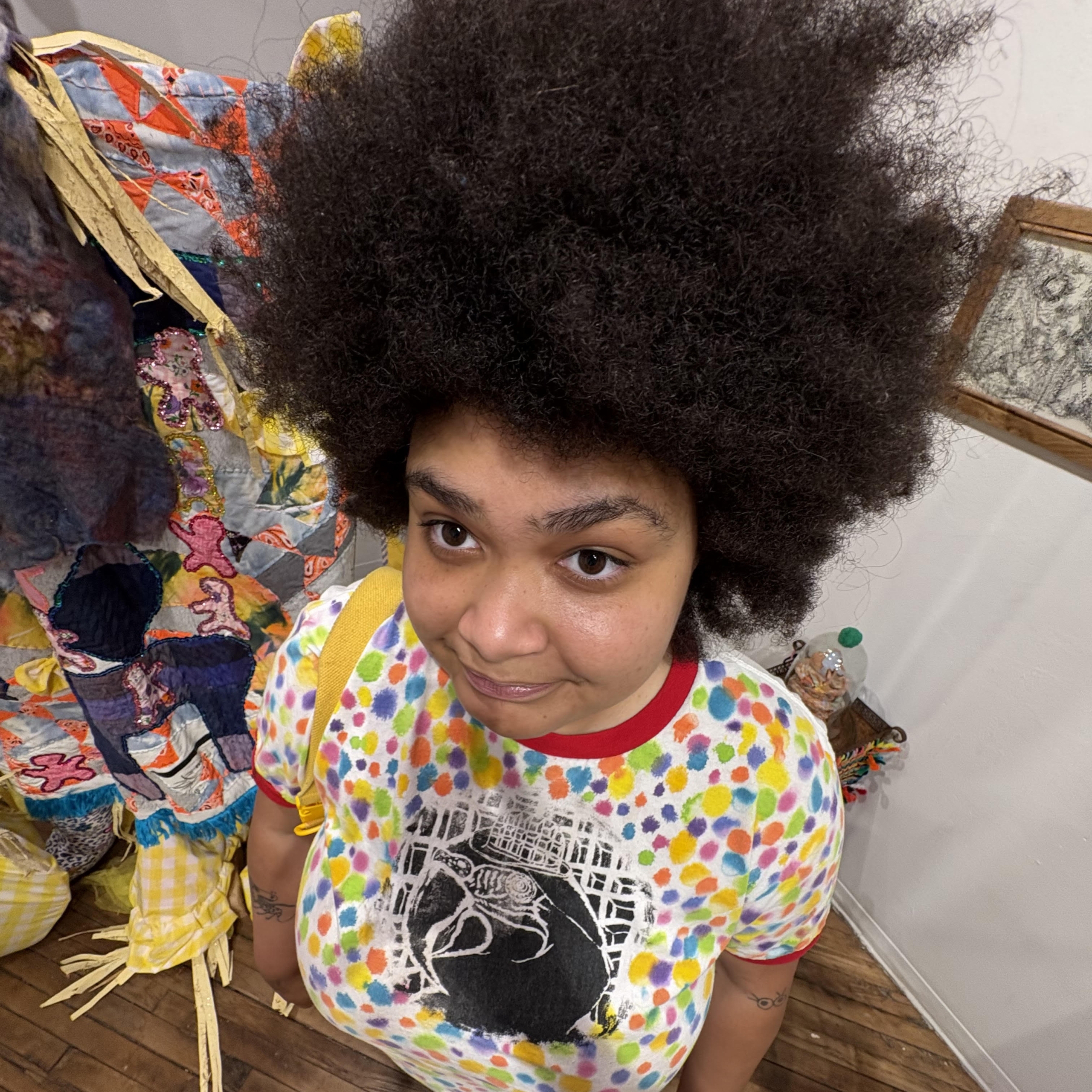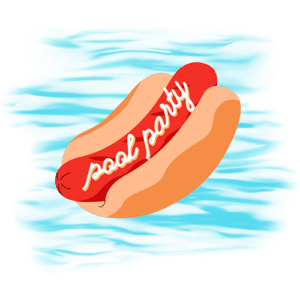SCRATCHING BOTH ITCHES: JAIME FOUNTAINE IN CONVERSATION WITH SOSO CAPALDI
As I helped with the load-out after the closing of their most recent show, “Entity Cramming” with Eric Anthony Berdis at Grizzly Grizzly in Philadelphia, it struck me that, even though Soso Capaldi and I make very different types of art, we’ve both tasked ourselves with creating small universes. Mine are just stories, but theirs are literal—they create physical structures to house and protect their signature creatures, which they lovingly bring to life through a variety of mediums including illustration, ceramics, fabrics, and found objects. Not long after the exhibition, we spoke about their work, religious experience, our shared family, and David Lynch.
Jaime Fountaine: I think it’s only fair to open with the fact that you’re my cousin and I’ve known you for your entire life. You’ve been drawing and making little creatures for most of that time. You’re also the person who introduced me to the concept of “re-parenting.” Do you feel like these two things are intertwined for you or are they separate practices?
Soso Capaldi: Yes! We are cousins!! Thank you for interviewing me! I do think these two things are intertwined. The creatures I interact with in my work are more than one thing—they are protectors for me, and they are also parts of me. They are mysterious to me as I’m still learning about myself and the world, and they are familiar anchors that make me feel safe. For years when I was having a really hard time mentally, I carried one in my pocket that I had made out of clay. It was based on a drawing, and it felt like a constant, which made me feel safe. I think this is what parents are supposed to do. The creatures and I collaborated so I could have a talismanic tool to make me feel safe.
{ All photos compliments of the artist }
Jaime: Your MFA thesis show in 2023 was called “Creature Party” and it was “based in the idea of finding a safe home.” You don’t just create these creatures; you build them homes. Was the choice to build them homes intentional from the start, or did that idea evolve naturally while you were making the work?
Soso: For a long time, I was nonstop drawing and carving the creatures. I was just so curious about them, and I didn’t know if my access to them would ever dry up, so I just kept putting them on paper. I tried several iterations of homes for them, but my brain was going too fast back then, I think. Fast forward to my mid-twenties, when I didn’t have a safe place to live. I was hyper-focused on living arrangements and still always making the creatures. I realized it would be the perfect time to try and make them comfortable while I sorted things out. They had helped me so much despite my circumstances, and I thought it was only right to try my hand again at making them some homes.
Some creatures themselves are like large apartment buildings for the smaller ones to live in. I think about that relationships as being symbiotic or mutualistic, like a sea anemone and a clown fish, and I feel my relationship to the creatures is similar. An important note is religion and spirituality are an undercurrent throughout all of this and I think the creatures act as a spiritual salve to the pain I’ve endured at the hands of religious extremism throughout my life. I don’t know everything about them or where they come from really, but they always made me feel safe and gave me agency.
Jaime: Our shared family is a Catholic one and we both attended Catholic schools at different points. I always describe my religious upbringing as being raised Catholic by someone with a personality disorder, so all my magical thinking is punishment-based. Can you talk a little bit about how religion and religious extremism has shaped your worldview and your work?
Soso: That’s really funny, and awful, and I can relate. I think because religious extremism was a theme—especially with my mom being Muslim, and my dad coming from a Catholic family—I just started to get curious about religion and indigenous practices. This is ongoing and I’m trying to read religious theory to figure out anything I can. It’s boring, though.
I’m also listening to the Da Vinci Code books which are mad goofy. They talk about goddess worship and how Christianity stole so much from paganism, so I bought this non-fiction book about goddess worship that talks about how Christianity was just smear campaigning paganism to gain the upper hand and be the main religion. It says that actually European paganism is taken from Egypt and some of the words in Wicca are actually just bastardized Egyptian words. Somehow, all this makes me feel better because after doing this research, the big religions feel like Costco and McDonalds, and the little indigenous religions and spiritual stuff feels like mom-and-pop stores. I stan a mom-and-pop store, and that’s what I want to be affiliated with.
I think seeing these two big religions from the inside sort of ended up cancelling each other out for me. As for my work, I think the creatures are spiritual beings that are also not affiliated with the corporate religions, and are instead mom-and-pop spiritual.
Jaime: Do the safe spaces that you’ve built for your little guys reflect the ones you’ve created for yourself within your community?
Soso: I do sort of feel like my home now is similar to a creature home. It’s a bunch of queer artists living together in a big house and we’re always working on projects side by side. We all have very different rooms and approaches to art, but it works. We call it study hall like when you were in high school, and they would put you in a room with randos, and you would just do your homework or draw or whatever. At our house, we all sit in the dining room and put on wordless music that makes us feel like we’re on PBS and we just work away for hours on separate projects—computer work, printmaking stuff, drawing, puppet making, bike repair, and so on. I could see the creatures doing something similar.
Jaime: What have you learned from the creatures?
Soso: I’ve learned a lot from the creatures. While I’m drawing—a process that teaches me so much about how to exist—the creatures are right there with me, and they’re getting scribbled into the paper while I’m learning. One thing drawing with the creatures has taught me is to actually use a material. I think when we make things, a lot of people are worried they’re going to waste material or ruin the art, but I tend to think you can work with the mistakes, and now that AI is ruining so much stuff, the erroneous lines we make are much more special. “Making a mistake” in a drawing and allowing it to be shown to anyone who views it is a hugely vulnerable action that I cherish from others, and I try to allow my errors to be shared so others can maybe have more acceptance of themselves.
Jaime: What have you taught them from your experience?
Soso: I think less about teaching them and more about just showing them around our world. Something cool I give them is a chance to be a part of a play on paper. They get all dressed up and pose on the page in a way that they might not get to where they’re from. I think fun is really important, so I teach them some things about earth, and try to give them some fun opportunities to play in the production on paper that is the drawing.
A note about the creatures is that I’ve been affectionate toward them since I was a kid—drawing them and making them out of various materials—but when I was in undergrad, I meditated with one that I made to help me trust myself more when I was really suffering mentally, and it appeared in my head really big. I was standing next to it, and it was about as big as an elephant. It slid fast enough through the sand that dust was churned up, and it slowed to a stop next to me. The one I know in this world is not more than 12 inches long, but here it was enormous and gentle. From that moment on, everything changed because I realized they might be real, and this is why I generally don’t give them names—they might already have them, and are just visiting me and helping me; I’m forever grateful to them. I know this all sounds nuts but there is always crazy shit happening anyway.
Jaime: This process sounds a little bit like the way Davis Lynch has described “Catching the Big Fish” of his ideas through meditation. Lynch has always been a touch point for me, even though I’m not a meditator. I just start thinking about what’s in the fridge and what I can make out of it. Was there an artist or piece(s) of art that you can point to that, to some degree, set the tone for your work or personality? For example, I saw Twin Peaks in kindergarten.
Soso: I love David Lynch! I have never heard him talking about catching the big fish, but I’ll have to look that up.
Jaime: I will loan you the book if you want! To be clear, I didn’t watch the whole thing front-to-back, but I was not a well-supervised child. We briefly lived with my dad’s parents and my grandfather watched it, so I saw bits and pieces. When I was in college and finally experienced the whole thing, it felt like coming home. At this point in my life, I was also an insomniac who would sneak downstairs to watch old movies and Ripley’s Believe It or Not! reruns before dawn. I became very emotionally attached to the Elephant Man and James Whale’s Frankenstein’s monster, because they couldn’t help the things by which they were ultimately destroyed. Pretty heavy take for a five-year-old!
Soso: I think it’s crazy you saw Twin Peaks in kindergarten. I saw a lot of it for the first time when I was in college on acid, and I haven’t seen it since. I had a long meditation stint to try and fix my brain after I started seeing stuff in undergrad when I would smoke weed and I thought I was promised to hell because of this weed vision I had. I would meditate every morning for an hour and I would sometimes see crazy shit happening in my head when I would meditate and I eventually decided to stop meditating because it was too intense and I don’t think that’s how it’s supposed to be. I did have positive experiences as well. The imagery wasn’t negative, it was just intense to be dealing with before class in the morning. This was like 7 years ago.
As for a person, I can’t think of anyone except for the men in dresses I was in love with as a child. Gene Wilder as Willy Wonka, Captain Hook, and the Grand Duke from Cinderella. I would call him the blue guy though. But these guys I really loved and Captain Hook is definitely queer-coded. I do also love the imagery from Willy Wonka. I can’t think of any other childhood inspo right now.
Jaime: You use a lot of different materials in your work, and it crosses a few disciplines. How much do the materials dictate how a creature takes shape? How much do the creatures dictate the material?
Soso: The material can definitely freshen things up. Moving between materials acts as a recharging pad-type beat, and building creatures out of different materials sometimes adds features to the creatures, so when they move back between mediums, they emerge with a new horn or hairdo. I make the creatures over again in different materials to find out which one is most flattering for them, and also just to think of them. I like to try and make any material work for them, and this ends up failing a lot, but that’s part of it.
Jaime: You have also written comics. When you’re working on a comic, do the words come first or do you start with the pictures?
Soso: I can’t make normal people comics with a nice textual rhythm, because the pictures mostly come first, so most of the rhythm is within the imagery. I do still try to get a feeling and story across, but they are received really differently by people, which is what I want, so it’s okay. Some people say they make no sense, and some people reach out somehow knowing intricacies of the books and it’s really a cool process. It takes me a really long time to make a comic, because they are usually about painful things and I need to work through a lot of feelings to get one done.
I’m working on one now slowly. I started it last year and I think I have like 6 pages done. I also like each page to be able to stand alone so they’re usually obsessive compositions.
Jaime: I think “compositions” is the exact right word for your comics because the words and images aren’t always direct, they fit more together like words and music in a song do—separate, equally important parts that prop each other up toward greater meaning. You also said “obsessive,” and I’d like to know more about that—your work is very intricate, often with repeating themes or patterns. Do these processes frustrate you, or are they meditative?
Soso: This is a great question because I think like anything worth doing, my favorite drawings are a little frustrating. You have to sort of struggle to figure out how the puzzle goes together, but then it’s worth it when the pieces slide together seemingly without effort. The pieces that you’re obsessively running your eyes over finally make sense, and all of the focus you exert ends up having a use. So, I’d say my drawings are frustrating and satiating at different points.
Jaime: As a writer, I often find myself desperate for a task to do with my hands so I can distract the anxious part of my brain and let the generative one have free reign. I’m curious if you have a similar system, or if drawing/sculpting/building/etc. scratches both itches for you?
Soso: I think it’s cool that we are both covering the same bases in different ways as artists—mine is just like a two-in-one shampoo, if that didn’t have a negative connotation. There are different times for me in a drawing, like high tide and low tide. I’ll map everything out, which requires a lot of focus, and I can shut everything else off in order to accomplish this, which is helpful. When I’m working on a drawing with many, many sessions, I decide if I’m in high or low tide before I begin, but I can usually switch back and forth. I just prefer to be in one process for a long time, because I feel like I have to settle into one of the states. High tide is the focusing, mapping and active thinking. Low tide is when I go on cruise control and sort of just become the pattern making or color blocking.
I’m pretty zoned out during this, but I have to be a little bit aware, because otherwise I’ll slip up and do something I don’t want to. This happens all the time anyway and I have to work with it, but that’s the most interesting part aside from the mapping. Figuring out how to make the error slip into the rest of the play without ruining the performance and maybe even enhancing it. Something important though, is to stay awake in the drawing process. I’ll have a plan, but I’ll stray from it and that’s what makes things interesting. If you are bored when you’re making a drawing, everyone will also feel that looking at it, too. This is basically a saying one of my undergrad professors repeated constantly—he got it from somewhere else I believe, but it’s some of the best advice ever for making things: The process saves us from the poverty of our intentions. I think this is a great reason to explore. Because if you just follow plans to a “T” shit comes out boring as hell. The wiggle room you allow yourself, I think, is the best part. So, to answer your question, it does scratch both itches.
You can see and learn more about Soso Capaldi’s work by following them on Instagram.
Soso Capaldi
Soso Capaldi earned their MFA in ceramics from the Tyler School of Art and Architecture and a BFA in Drawing and Painting from Penn State University.
They are a black, queer, artist exploring ideas of religion and spirituality. They work with any medium they can get their hands on. With the help of the creatures in their work, they are hoping to land softly and create safe spaces for themselves and others on paper and in the physical world.
- SCRATCHING BOTH ITCHES: JAIME FOUNTAINE IN CONVERSATION WITH SOSO CAPALDI - October 16, 2025
* This is a work of fiction. Names, characters, places, and incidents are producs of the author's imagination. Any resemblance to real events or persons, living or dead, is entirely coincidental.











